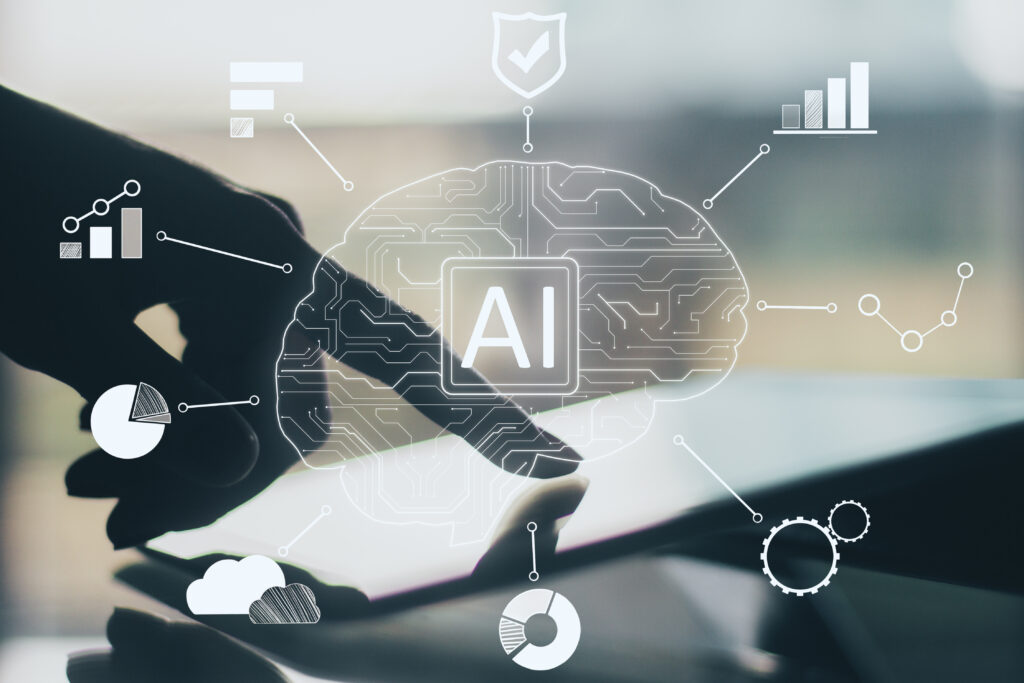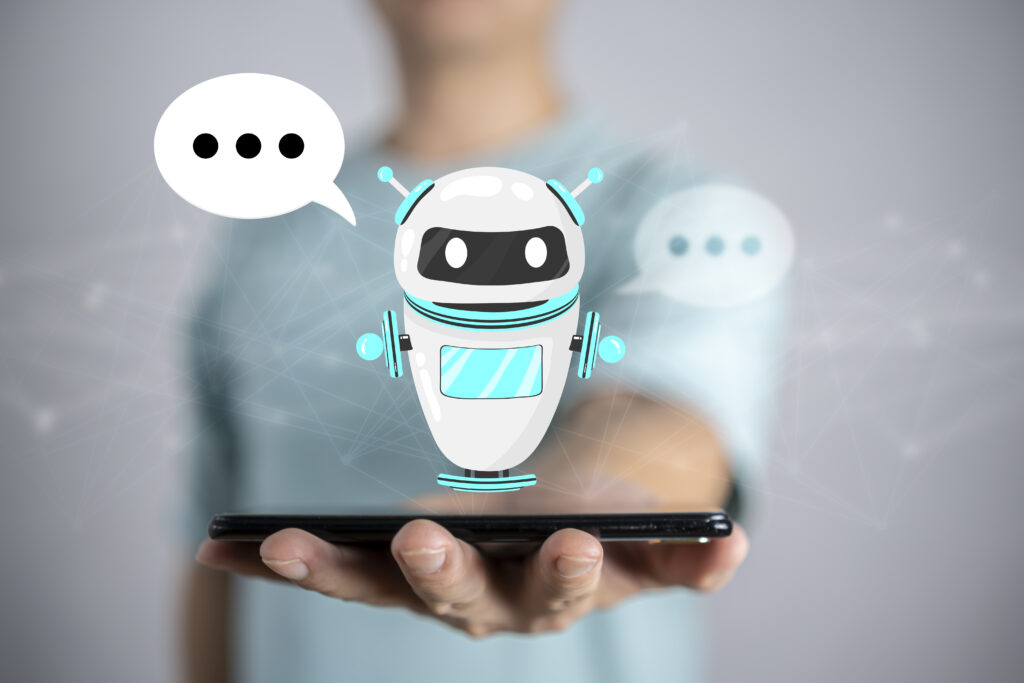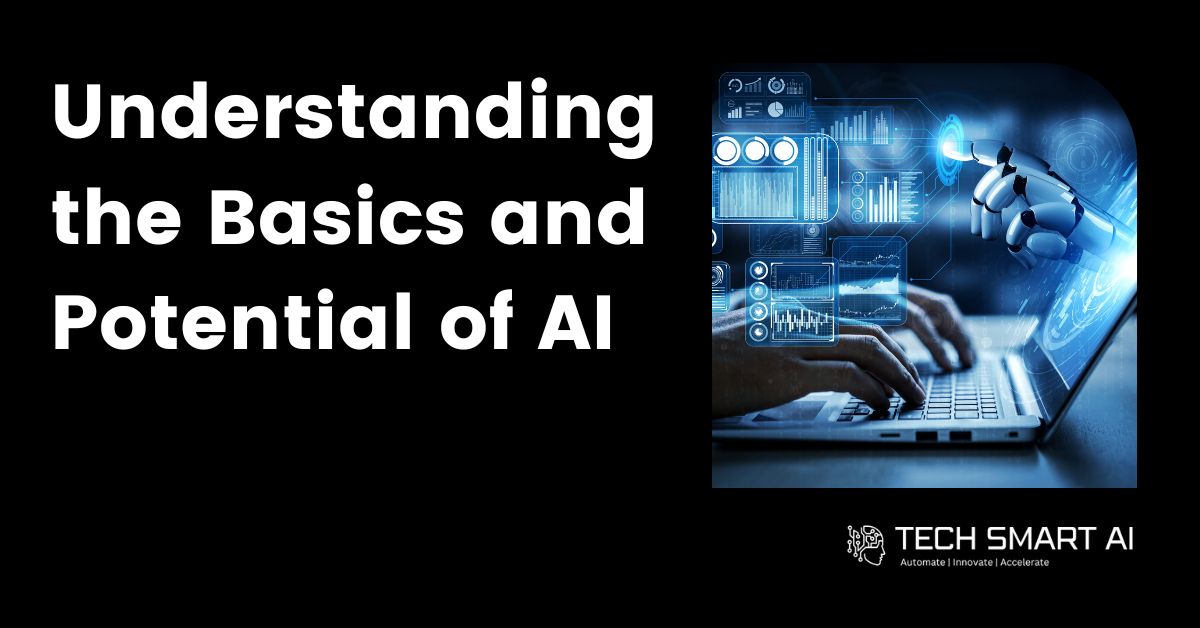Artificial Intelligence (AI) is one of the most exciting and rapidly evolving technologies of our time, with the potential to revolutionize various industries and transform our daily lives.
However, understanding the basics of AI can be challenging, especially for beginners. That’s why this guide is designed to provide a step-by-step introduction to AI and help you gain a better understanding of its inner workings.
In this post, we will explore the world of AI and provide a comprehensive overview of its basics, potential, and real-world applications. We will discuss the different types of AI, including machine learning and deep learning, explore their applications, and address concerns about AI ethics and the future of work. We will also explore the potential of AI and how it can impact society.
Table of Contents
Understanding the Basics of AI
Artificial Intelligence (AI) refers to the ability of machines to perform tasks that typically require human-like intelligence. AI has been around for decades, but recent advancements in computing power and data availability have led to significant breakthroughs in the field. Some of the most well-known AI applications include virtual assistants, image recognition, and natural language processing.

Types of AI
There are three types of AI:
Rule-Based AI uses a set of pre-defined rules to make decisions or solve problems. This type of AI is limited to the rules it is programmed with.
Machine Learning involves training machines on large datasets to learn from patterns and make predictions or decisions based on new data. This type of AI is more flexible and can adapt to new situations.
Deep Learning is a subset of machine learning that uses neural networks to analyze complex data such as images, audio, and text.
Machine Learning vs. Deep Learning
Machine Learning and Deep Learning are both subsets of AI, but they differ in their approach to learning. Machine learning uses algorithms that analyze data, identify patterns, and make predictions or decisions based on that data. Deep learning, on the other hand, uses neural networks to simulate the human brain’s structure and function, enabling it to analyze complex data like images and speech.
One key difference between the two is the amount of data required to train the algorithms. Machine learning models can be trained on smaller datasets, while deep learning models require large amounts of data to learn effectively. Another difference is the level of human involvement required. In machine learning, humans need to define the features and labels in the data, whereas deep learning can automatically learn features and labels from the data.
Overall, both machine learning and deep learning have their advantages and disadvantages, and the choice of which one to use depends on the specific use case and available resources.
Applications of AI
AI in Healthcare:
AI is rapidly transforming the healthcare industry, from diagnosis and treatment to drug discovery and personalized medicine. Some examples of AI applications in healthcare include:
- Medical Imaging: AI can analyze medical images such as X-rays, CT scans, and MRIs to detect and diagnose diseases with greater accuracy and speed.
- Electronic Health Records (EHRs): AI can analyze large amounts of patient data from EHRs to identify patterns and provide personalized treatment recommendations.
- Drug Discovery: AI can simulate and predict the efficacy of drug candidates, speeding up the drug discovery process and reducing costs.
AI in Finance:
AI is also transforming the finance industry, with applications ranging from fraud detection to risk management and trading. Some examples of AI applications in finance include:
- Fraud Detection: AI can analyze large amounts of financial data to detect fraudulent activity and alert banks and financial institutions in real time.
- Customer Service: AI-powered chatbots and virtual assistants can help customers with basic inquiries, reducing the workload of human customer service agents.
- Trading: AI can analyze market trends and make predictions based on historical data, assisting traders in making more informed decisions.

AI in Transportation:
AI is playing a significant role in the transportation industry, with applications in autonomous vehicles, logistics, and traffic management. Some examples of AI applications in transportation include:
- Autonomous Vehicles: AI can enable self-driving cars, trucks, and drones to navigate roads and avoid accidents.
- Logistics: AI can optimize transportation routes and reduce costs by analyzing data such as delivery times and traffic patterns.
- Traffic Management: AI can analyze traffic patterns and make real-time adjustments to traffic lights, reducing congestion and improving traffic flow.
These are just a few examples of how AI is transforming various industries. As AI continues to evolve and become more advanced, its potential for impact will only continue to grow.
Exploring AI Techniques
Natural Language Processing:
Natural Language Processing (NLP) is a subfield of AI that deals with the interaction between computers and human language. Some examples of NLP applications include:
- Text Classification: NLP can classify text into categories such as spam or non-spam, sentiment analysis, and topic modelling.
- Language Translation: NLP can translate text from one language to another in real-time, allowing people who speak different languages to communicate effectively.
- Voice Assistants: NLP can power voice assistants such as Siri and Alexa, allowing people to interact with their devices using natural language.
Computer Vision:
Computer Vision is a subfield of AI that deals with the ability of machines to interpret and understand visual information from the world around them. Some examples of Computer Vision applications include:
- Object Recognition: Computer Vision can recognise and classify objects in images or videos, allowing machines to understand their environment.
- Facial Recognition: Computer Vision can identify and recognize individual faces, enabling applications such as security systems or photo tagging.
- Autonomous Vehicles: Computer Vision can enable self-driving cars and drones to navigate roads and avoid obstacles.
Robotics:
Robotics is a field of engineering and computer science that deals with the design, construction, and operation of robots. Some examples of Robotics applications include:
- Industrial Automation: Robots can perform tasks such as welding, painting, or assembly in manufacturing settings, increasing efficiency and reducing costs.
- Healthcare: Robots can assist in surgeries and physical therapy, or provide companionship to elderly or disabled individuals.
- Education: Robots can be used in education to teach coding or STEM subjects, or to provide interactive learning experiences for students.
These are just a few examples of the diverse and exciting applications of AI techniques. As AI continues to advance, we can expect even more innovation and progress in these fields.
Addressing AI Ethics and Concerns
Ethics in AI:
As AI continues to play an increasingly significant role in our lives, it is important to consider ethical considerations such as:
- Privacy: AI applications can collect and analyze personal data, raising concerns about privacy and data protection.
- Accountability: As AI becomes more autonomous, it is essential to consider who is responsible for the decisions and actions of these systems.
- Transparency: The lack of transparency in some AI systems can lead to mistrust and misunderstanding.
Bias and Fairness in AI:
AI systems are only as unbiased as the data used to train them, and as such, it is essential to consider the fairness and accuracy of these systems. Some examples of bias in AI include:
- Gender and Racial Bias: AI systems can reflect and amplify biases present in the data used to train them, leading to discriminatory outcomes.
- Algorithmic Bias: Some AI systems can produce results that are not explainable or transparent, leading to a lack of trust and understanding.
AI and the Future of Work:
AI has the potential to transform the way we work and create new job opportunities, but it also raises concerns about automation and job displacement. Some considerations for the future of work with AI include:
- Reskilling and Training: As jobs become automated, it is essential to invest in training and reskilling programs to prepare workers for new roles.
- Collaboration with AI: Rather than seeing AI as a replacement for humans, we can view it as a tool to augment and enhance human abilities.
- Universal Basic Income: Some propose implementing a Universal Basic Income to address the potential job displacement caused by AI.
These are just a few examples of the ethical considerations and concerns surrounding AI. As AI continues to advance, it is essential to continue these conversations and ensure that AI is developed and used in a way that is beneficial and fair for everyone.
The Future of AI
Advances in AI Research:
AI research is constantly evolving, and there have been many recent breakthroughs and advancements. Some examples include:
- GPT-3: The development of GPT-3, a language model that can generate human-like text, has sparked new possibilities for AI in natural language processing and other applications.
- Reinforcement Learning: Reinforcement learning is a subfield of machine learning that focuses on training agents to make decisions in complex environments. Recent advances in this area have enabled significant progress in robotics and game-playing applications.
- Explainable AI: As AI systems become more complex, there is a growing need for transparency and understanding of their decision-making processes. Research in explainable AI aims to address this issue and make AI systems more transparent and interpretable.
The Potential of AI:
AI has the potential to transform many areas of our lives, including healthcare, transportation, and education. Some examples of the potential of AI include:
- Healthcare: AI can help with the early detection and diagnosis of diseases, personalized treatments, and drug discovery.
- Transportation: AI can enable self-driving cars and improve traffic management, leading to safer and more efficient transportation.
- Education: AI can provide personalized learning experiences for students and assist with grading and feedback for teachers.

The Impact of AI on Society:
As AI becomes more widespread and integrated into our lives, it is important to consider its impact on society. Some potential impacts of AI include:
- Job Displacement: AI has the potential to automate many jobs, leading to concerns about job displacement and unemployment.
- Ethics and Bias: As discussed earlier, there are ethical considerations and concerns around bias and fairness in AI systems.
- Socioeconomic Divide: AI has the potential to widen the divide between those who have access to advanced technologies and those who do not.
These are just a few examples of the future of AI and its potential impact on society. As AI continues to advance, it is important to consider its implications and ensure that it is developed and used in a way that benefits everyone.
Summary
Advances in AI Research:
AI research is constantly evolving, and there have been many recent breakthroughs and advancements. Some examples include:
- GPT-3: The development of GPT-3, a language model that can generate human-like text, has sparked new possibilities for AI in natural language processing and other applications.
- Reinforcement Learning: Reinforcement learning is a subfield of machine learning that focuses on training agents to make decisions in complex environments. Recent advances in this area have enabled significant progress in robotics and game-playing applications.
- Explainable AI: As AI systems become more complex, there is a growing need for transparency and understanding of their decision-making processes. Research in explainable AI aims to address this issue and make AI systems more transparent and interpretable.
